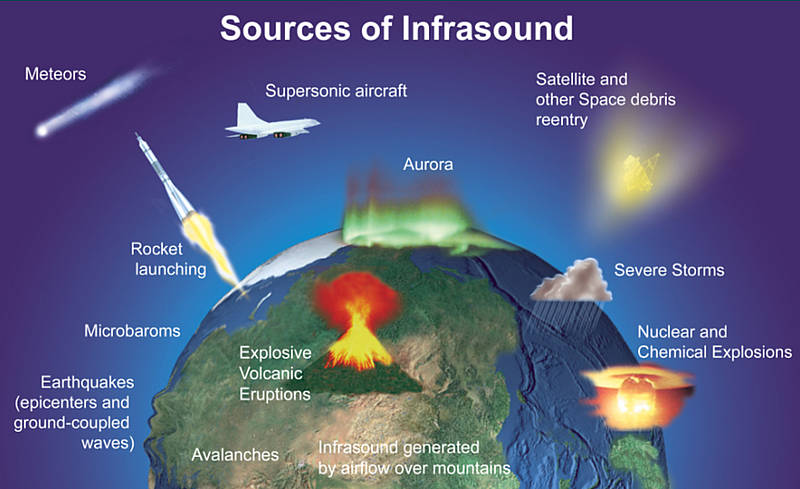"Infrasound is, like sound (and, for that matter, ultrasound) a matter of vibration. The difference is that infrasound vibrations are slower, which makes the pitch of the sound too deep for the human ear to make out- and the distance the sound can travel much longer...In the 1930's Hugo Benioff, who, with his Caltech colleague Charles Richter, was revolutionizing the study of earthquakes, found that there was infrasound that had no audible counterpart. His microphones picked up regular atmospheric trills he called "microbaroms". These are now thought to come about when ocean waves headed in different directions interfere with each other, causing a patch of the surface to rise and fall like a loudspeaker. The northern lights turn out to be another inaudible source of ultrasound [sic?]. So are some winds, like the Chinooks of Canada, and the ghostly "sprites" of ionized plasma that rise up into the atmosphere above thunderstorms, too faint to see with the naked eye. Speed their infrasound up to audible frequencies and you hear rather sweet opps-y noises, very different from the thunder of the storms below."
-Econ. Sept. 22-28, Intelligent Life p. 6

No hay comentarios:
Publicar un comentario